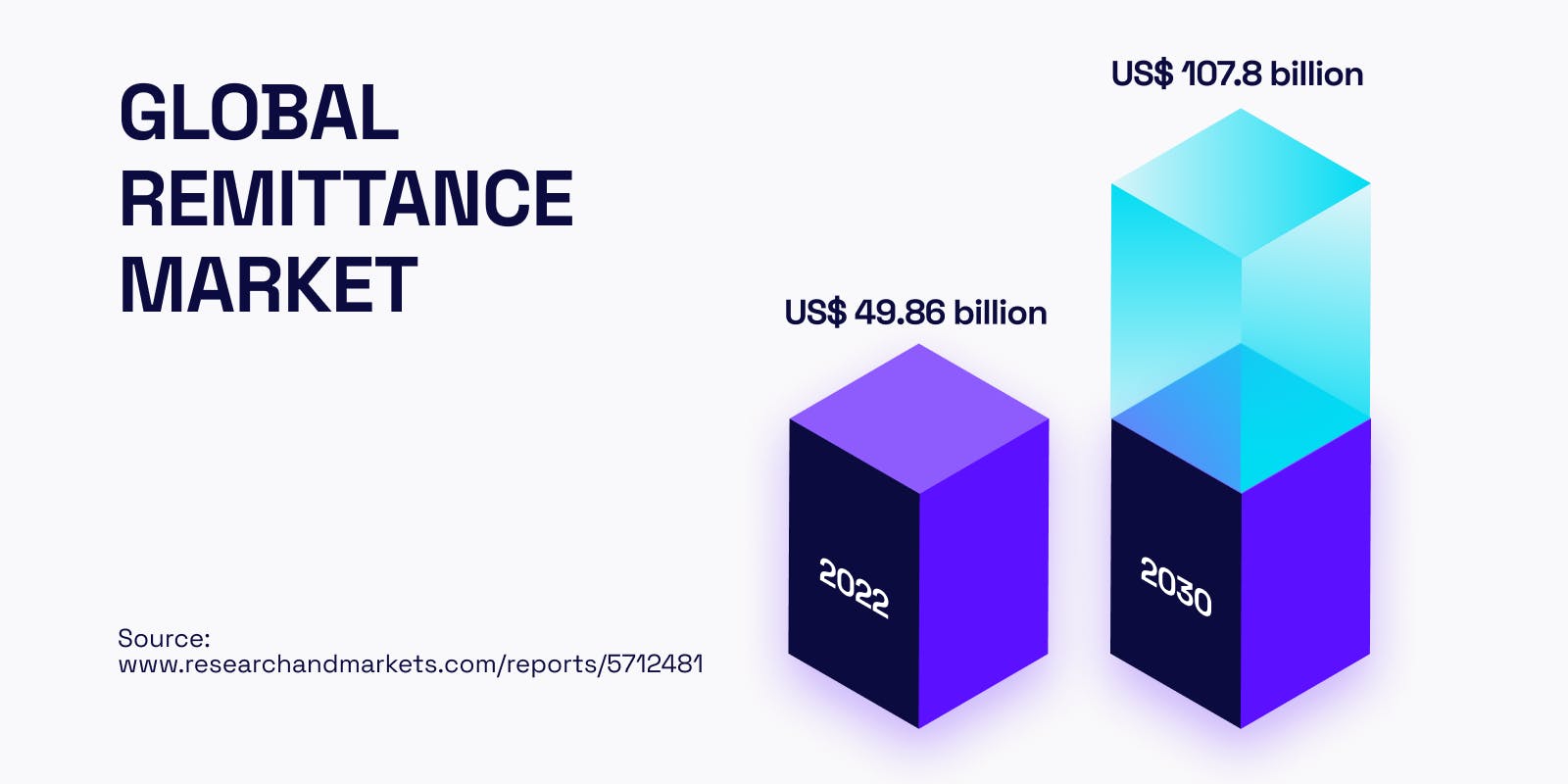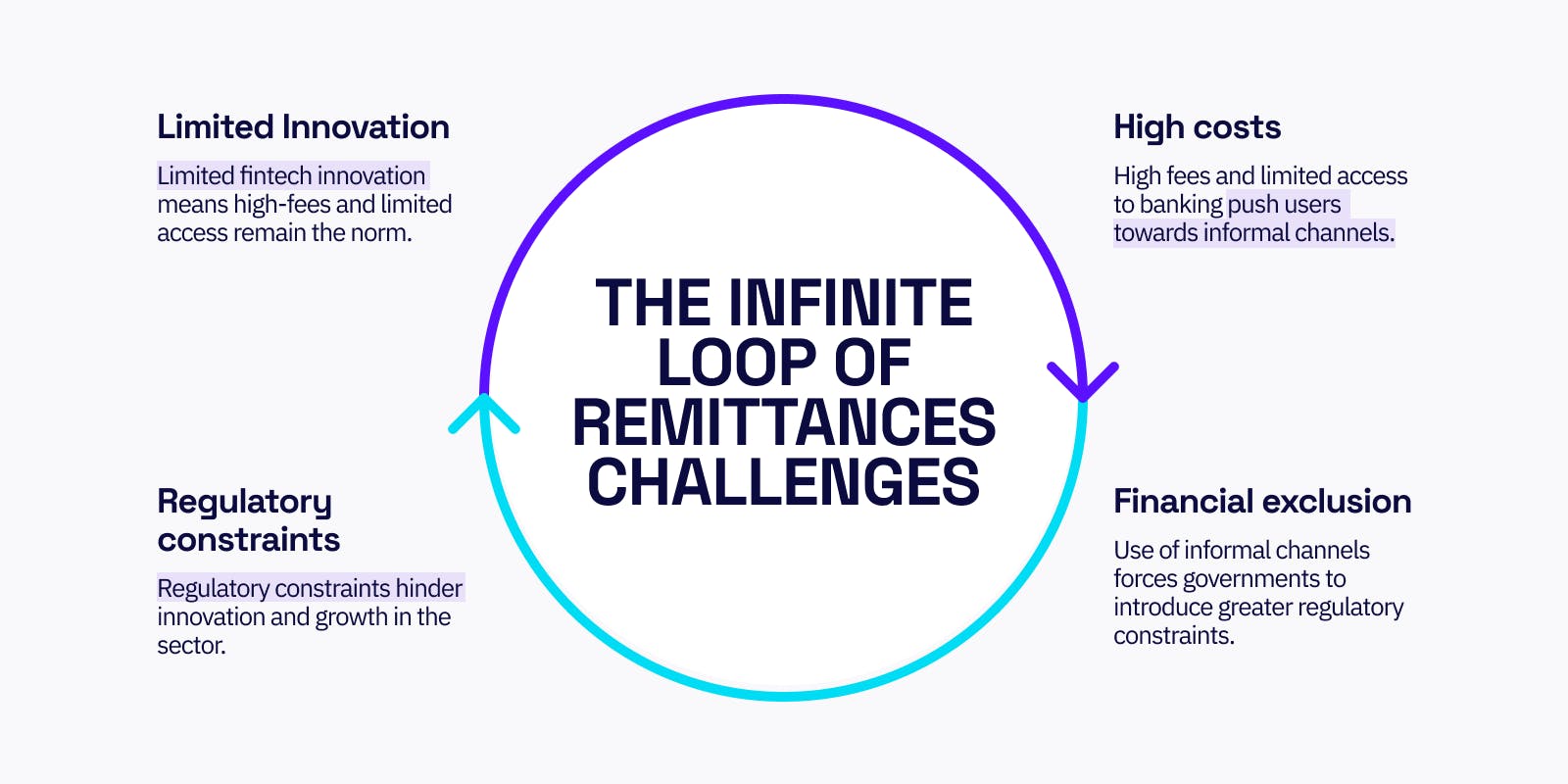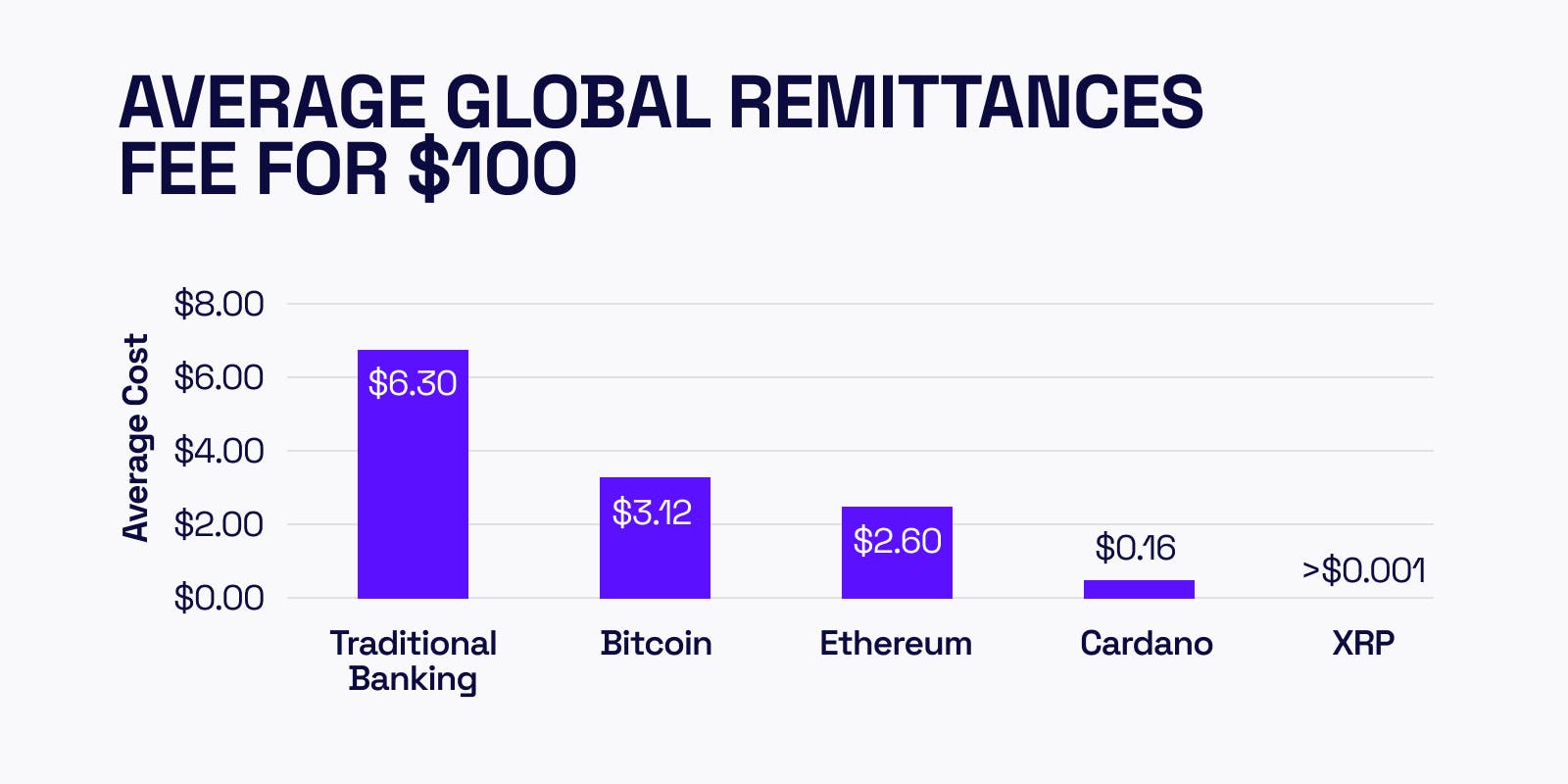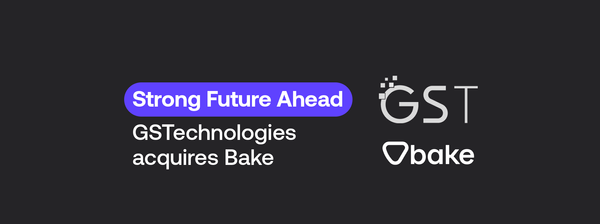Crypto Remittances: How Cryptocurrency Is Transforming International Payments
The global financial landscape is undergoing a seismic shift, and at the heart of this transformation lies the remittance industry. By 2030, the global remittances market is projected to soar to over $107 Billion, a significant leap from its $48.9 billion valuation in 2021.
A substantial portion of this market, approximately two-thirds, is anticipated to be dominated by personal remittances (payments made by everyday people).
However, the current remittance infrastructure is not equipped to handle such an uptick in demand. Traditional methods, while reliable, are sluggish, costly, and inaccessible to a huge segment of the global populace.
This is where cryptocurrencies come in as the modern-day solution to the age-old problem of sending money abroad.
This article dives into crypto's impact on cross-border payments and explores some of the crypto solutions already transforming the remittance landscape.

Source: researchandmarkets.com
Traditional Remittance: The Existing Challenges
Traditional methods of cross-border payments, while prevalent, are riddled with inefficiencies. They are slow, costly, and inaccessible to a significant part of the global population.
High Transaction Costs
The World Bank highlights that the average fee for transferring $200 across borders stands at around $13 (6.2%). These fees can escalate in countries with less globally relevant currencies, as multiple conversions must be made due to liquidity restraints. This puts additional financial strain on people remitting money to support their families, especially in emerging markets.
Time Delays
Conventional cross-border transactions take time and effort. They can span several days due to the involvement of multiple banks or intermediaries, each adding to the transaction's wait time and cost.
Limited Access
Despite technological advancements, over 1.4 billion adults remain without access to banking services globally. Without access to a bank, the challenge of sending or receiving money across borders increases drastically. This pushes people towards less secure, informal alternatives.
Regulatory Constraints
As people turn to informal channels for remittance, more pressure is put on governments to introduce stricter regulations surrounding cross-border payment providers. This means new innovations and solutions are restricted and often fail to get beyond legal barriers in place. This leads to an “infinite loop” of challenges for remittances within emerging markets:

Crypto Remittances: The Game Changer
Cryptocurrencies, underpinned by blockchain technology, are poised to revolutionize the remittance sector. Here's how:
Decentralization
Cryptocurrency transactions are peer-to-peer (P2P), eliminating the need for intermediaries like banks. Their decentralized nature allows for seamless, borderless transactions unrestricted by country-specific organizations or exchange rates. Anyone with an internet connection can send crypto anywhere in the world.
Speed
Cryptocurrencies offer a significant boost in transaction speed. Unlike traditional methods that take days, crypto transactions can be finalized within minutes and are available 24 hours a day, 365 days a year.
Lower Costs
By sidestepping intermediaries, crypto remittances also offer substantially reduced fees compared to traditional services. These fees are also more predictable and publicly known through tools like gas fee trackers.

Financial Inclusion
Cryptocurrencies democratize financial services through their accessibility. They open financial services to previously unreachable populations. Anyone with access to the Internet can transact swiftly and securely with crypto. This helps foster global financial inclusion.
Overcoming the Roadblocks
While cryptocurrencies offer many advantages, their widespread adoption in remittances is not without challenges:
Regulatory Concerns
The regulatory landscape for cryptocurrencies is fragmented, with rules varying across jurisdictions. This causes people to be hesitant before using crypto for cross-border transactions, especially if the legality of crypto itself is not clearly defined within their country.
Usability and Adoption
Despite growing awareness, many still find using cryptocurrencies a daunting prospect. Learning the technicalities of how to use blockchain solutions can be difficult for those used to traditional banking systems. However, many companies are taking steps to simplify user interfaces and onboarding processes, making it easier than ever for newcomers to the space.
Current Crypto Remittance Solutions
Here's an overview of some notable crypto remittance solutions already reshaping the landscape:
Bitcoin Remittance Platforms
Several platforms have been developed around Bitcoin to facilitate remittances. Users can send bitcoin (BTC), which recipients can convert into their local currency. Although Bitcoin itself is slow and costly compared to other crypto remittance options, its widespread adoption and recognition make it a popular choice for many.
Stablecoin-based Solutions
Stablecoins, or cryptocurrencies pegged to the price of a stable asset like the US dollar, have become a popular remittance option. They remove the problem of volatility from the equation, which is often an issue when using cryptocurrencies like BTC or Ether (ETH). Remittance platforms leveraging stablecoins ensure the value sent is the same as the value received, minimizing the risk of price fluctuations during the transaction.
XRP and RippleNet
XRP, the world's fifth-largest cryptocurrency by market cap, is at the forefront of crypto remittances. RippleNet, a decentralized payment network built by Ripple, offers financial institutions a platform to facilitate real-time, cross-border payments with XRP as a bridge currency. Its On-Demand Liquidity (ODL) service uses XRP to provide liquidity for transactions, ensuring swift and cost-effective transfers.
Stellar Lumens (XLM) and Stellar Network
Stellar Lumens (XLM), the native cryptocurrency of the Stellar network, is designed to facilitate cross-border transactions between any pair of currencies. Fees for sending transactions over the Stellar network are as low as 1/4000th of a cent, and transactions times take as fast as three seconds to complete.
The Future of Crypto Remittances
Cryptocurrencies herald a new era in remittances, promising to usher in transformative changes in a sector that has remained largely static for decades. While challenges persist, the potential of crypto to offer a more inclusive, efficient, and cost-effective remittance landscape is undeniable.
Sign up for Bake today for a simple and intuitive way to use your crypto for cross-border payments.

DISCLAIMER: Please note that the information on this blog and in any articles posted on this blog is for general information only and should not be relied upon as financial advice. Cake Pte. Ltd., Bake, UAB, and its affiliates (the “Cake Group”) are not licensed financial advisers. You may wish to approach your own independent financial advisor before making any decision to buy, sell or hold any product and/or digital assets mentioned in this blog.
Any views, opinions, references, assertions of fact and/or other statements are not necessarily the views held by the Cake Group. The Cake Group disclaims any liability whatsoever that may arise out of or in connection with such statements. Always do your own research before investing in any financial assets and consult a qualified financial advisor if necessary.




